Abstract
1. Changes in cytosolic free Ca2+ concentration ([Ca2+]i) induced by noradrenaline (NA) and ATP were investigated using indo-1 microspectrofluorimetry in single smooth muscle cells of rat portal vein. 2. Activation of P2x-purinoceptors by ATP (10 microM) increased [Ca2+]i from 92 +/- 7 nM (n = 18) to 557 +/- 30 nM (n = 11). In the presence of NA (10 microM), the ATP-induced rise in [Ca2+]i was reduced to 23.6 +/- 1.5% (n = 7) of the control response (in the absence of NA). 3. Tetracaine (10 microM to 2 mM) inhibited in a concentration-dependent manner the Ca(2+)-induced Ca2+ release (CICR) evoked by 5 mM caffeine. In the presence of 1 mM tetracaine, the rise in [Ca2+]i induced by ATP (10(-8)-10(-4) M) was strongly inhibited. A tetracaine-resistant rise in [Ca2+]i, corresponding to 26.4 +/- 2.3% (n = 14) of control values, was recorded in response to 10 microM ATP. 4. The amplitude of the NA-induced [Ca2+]i rise depended on NA concentrations (10(-8)-10(-5) M) and was not modified by tetracaine (1 mM). 5. This study suggests that Ca2+ ions released through the InsP3 receptor-channel upon NA application do not activate CICR and the InsP3- and Ca(2+)-sensitive Ca2+ store appears to represent, at least functionally, a single releasable Ca2+ pool.
Full text
PDF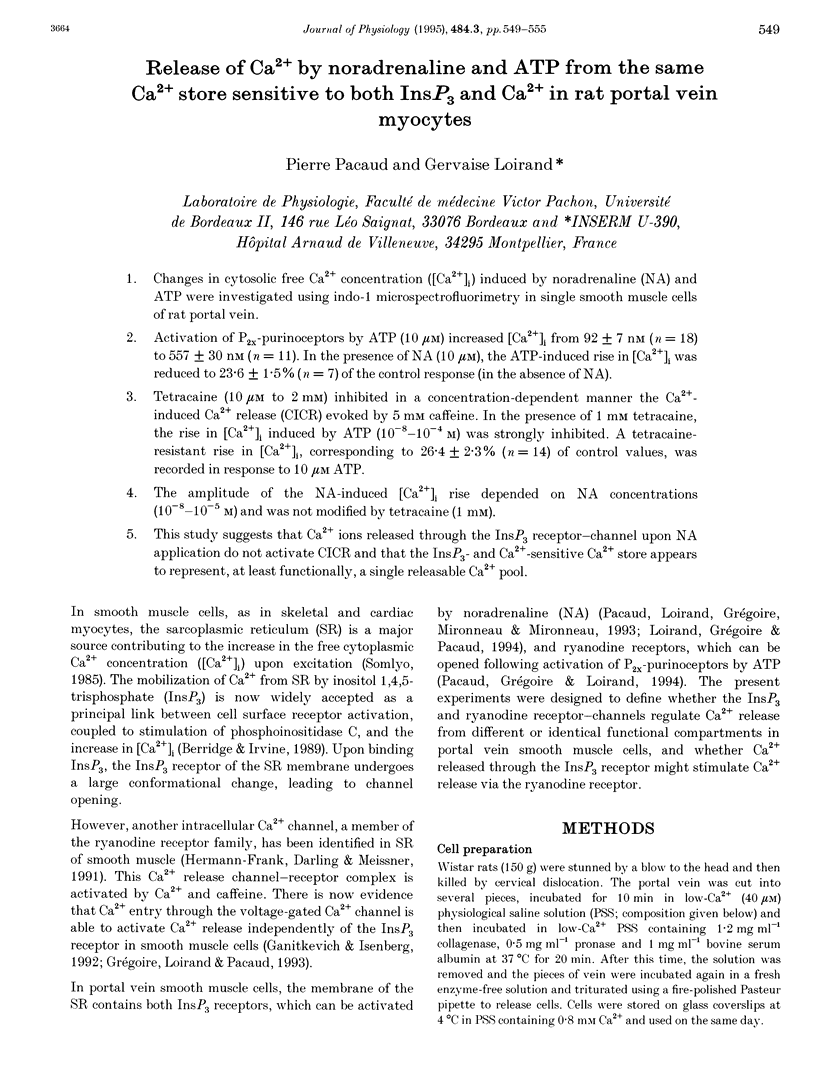
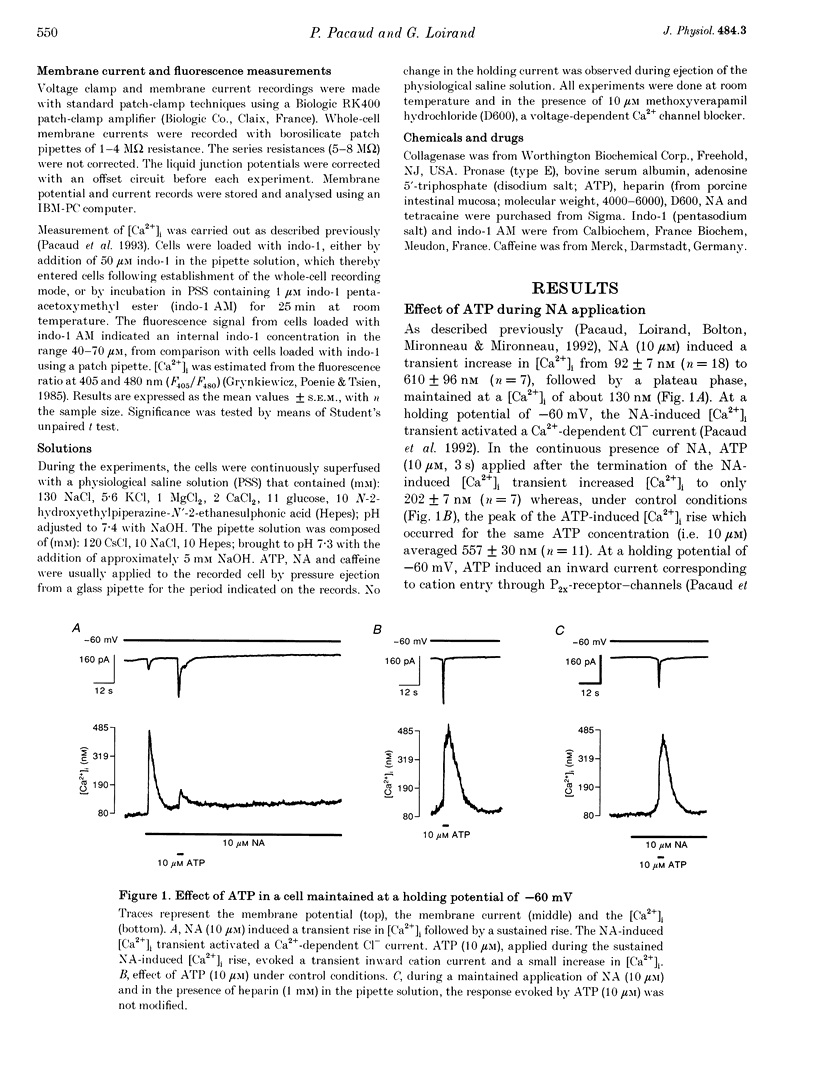
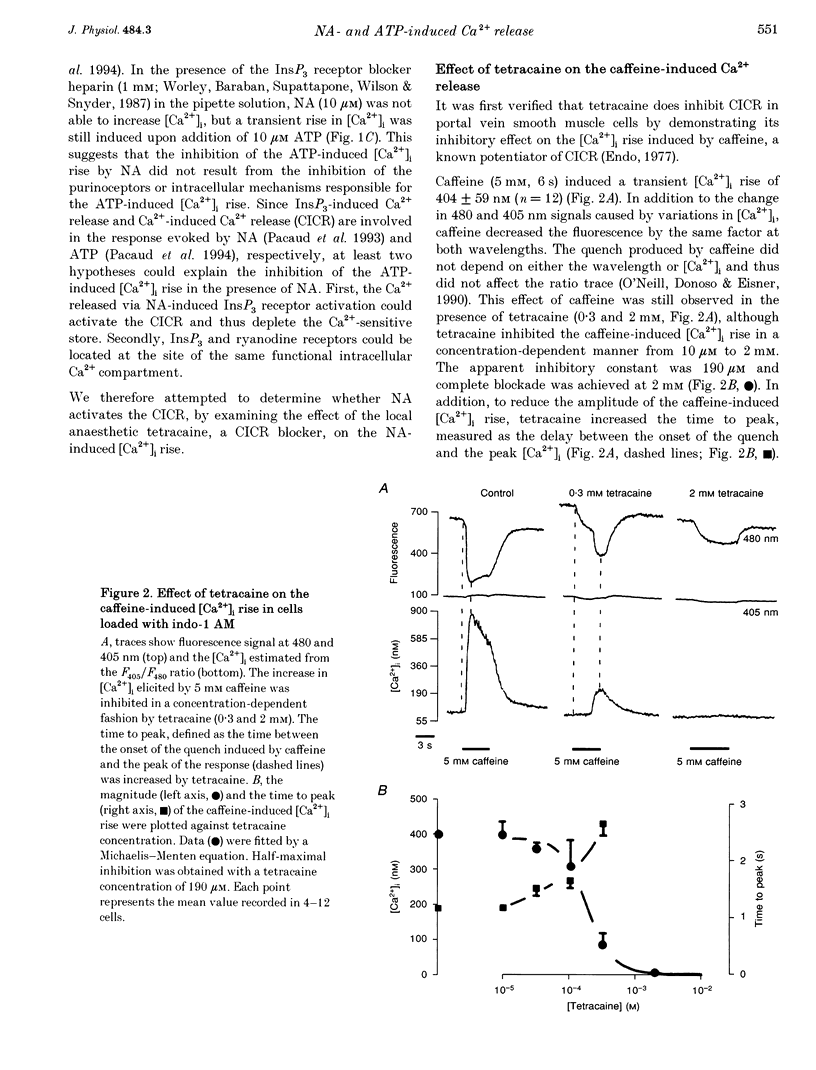
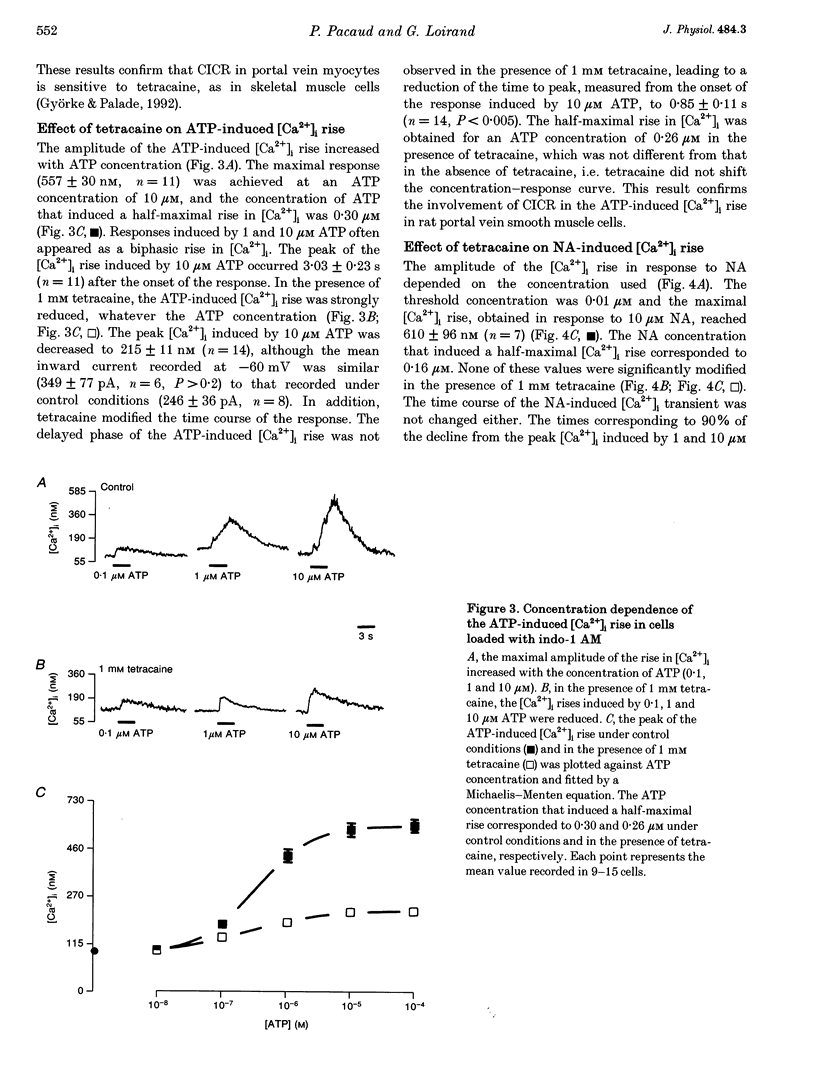
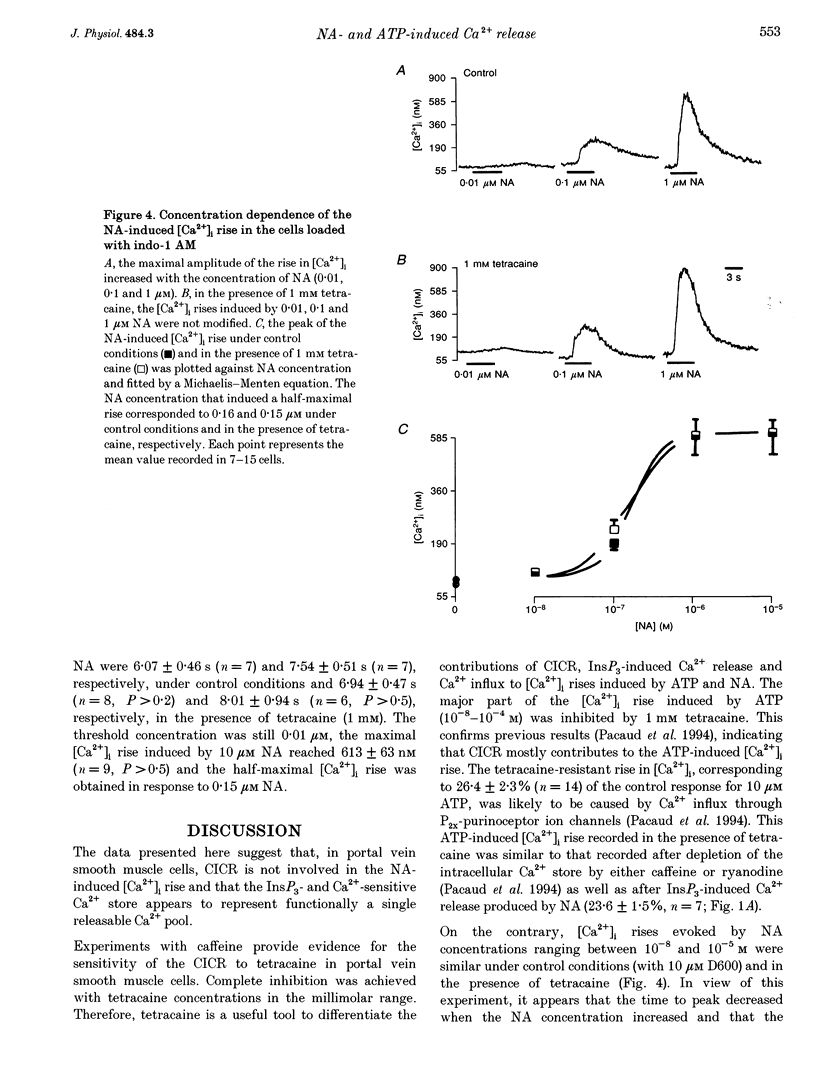
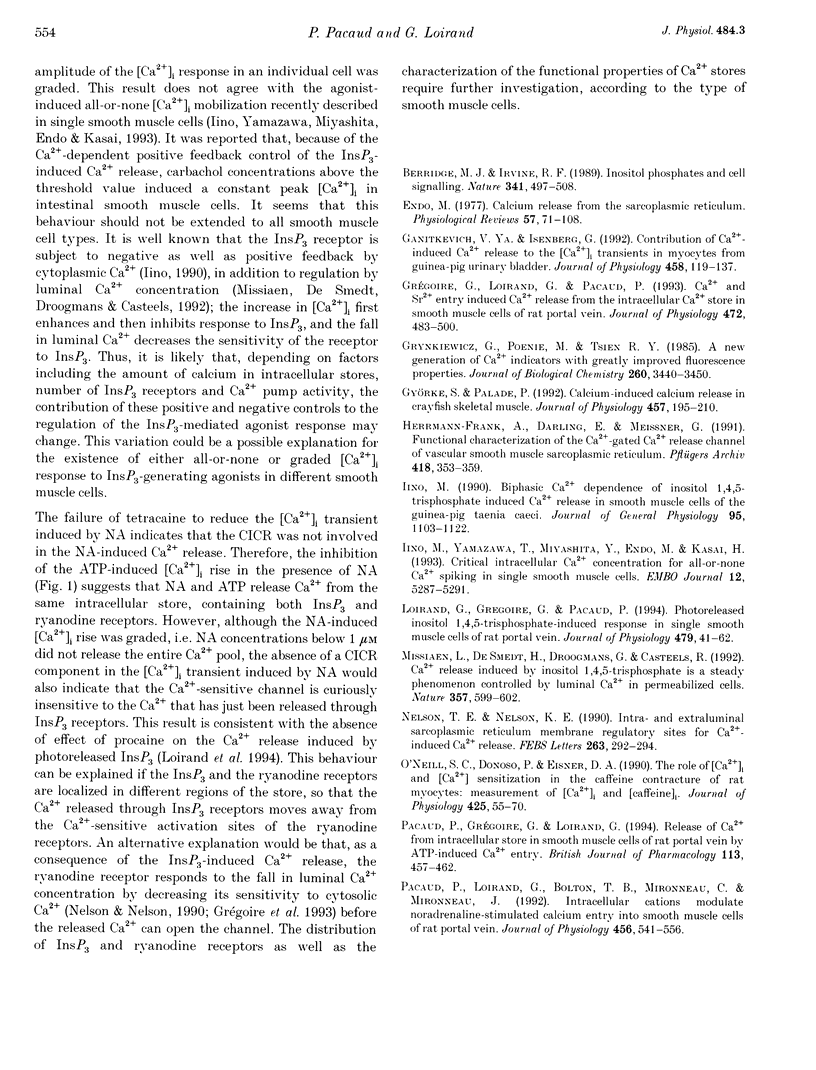
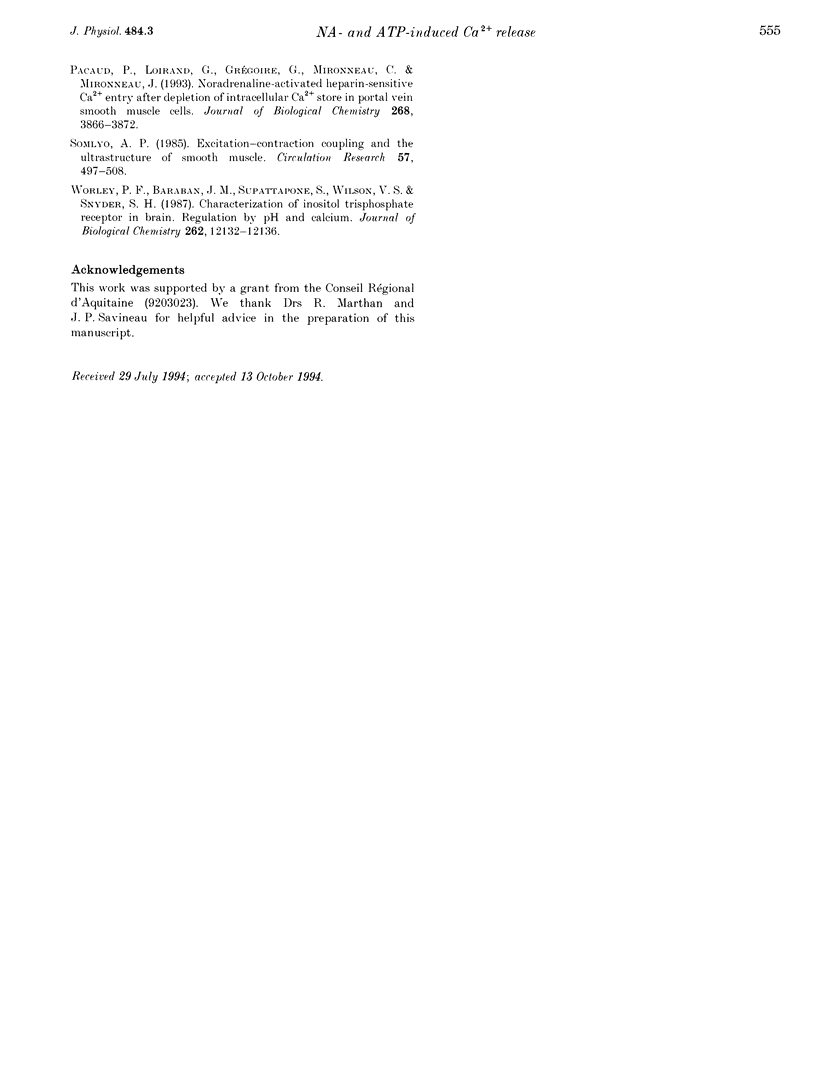
Selected References
These references are in PubMed. This may not be the complete list of references from this article.
- Endo M. Calcium release from the sarcoplasmic reticulum. Physiol Rev. 1977 Jan;57(1):71–108. doi: 10.1152/physrev.1977.57.1.71. [DOI] [PubMed] [Google Scholar]
- Ganitkevich V. Y., Isenberg G. Contribution of Ca(2+)-induced Ca2+ release to the [Ca2+]i transients in myocytes from guinea-pig urinary bladder. J Physiol. 1992 Dec;458:119–137. doi: 10.1113/jphysiol.1992.sp019409. [DOI] [PMC free article] [PubMed] [Google Scholar]
- Grynkiewicz G., Poenie M., Tsien R. Y. A new generation of Ca2+ indicators with greatly improved fluorescence properties. J Biol Chem. 1985 Mar 25;260(6):3440–3450. [PubMed] [Google Scholar]
- Grégoire G., Loirand G., Pacaud P. Ca2+ and Sr2+ entry induced Ca2+ release from the intracellular Ca2+ store in smooth muscle cells of rat portal vein. J Physiol. 1993 Dec;472:483–500. doi: 10.1113/jphysiol.1993.sp019957. [DOI] [PMC free article] [PubMed] [Google Scholar]
- Györke S., Palade P. Calcium-induced calcium release in crayfish skeletal muscle. J Physiol. 1992 Nov;457:195–210. doi: 10.1113/jphysiol.1992.sp019373. [DOI] [PMC free article] [PubMed] [Google Scholar]
- Herrmann-Frank A., Darling E., Meissner G. Functional characterization of the Ca(2+)-gated Ca2+ release channel of vascular smooth muscle sarcoplasmic reticulum. Pflugers Arch. 1991 May;418(4):353–359. doi: 10.1007/BF00550873. [DOI] [PubMed] [Google Scholar]
- Iino M. Biphasic Ca2+ dependence of inositol 1,4,5-trisphosphate-induced Ca release in smooth muscle cells of the guinea pig taenia caeci. J Gen Physiol. 1990 Jun;95(6):1103–1122. doi: 10.1085/jgp.95.6.1103. [DOI] [PMC free article] [PubMed] [Google Scholar]
- Iino M., Yamazawa T., Miyashita Y., Endo M., Kasai H. Critical intracellular Ca2+ concentration for all-or-none Ca2+ spiking in single smooth muscle cells. EMBO J. 1993 Dec 15;12(13):5287–5291. doi: 10.1002/j.1460-2075.1993.tb06224.x. [DOI] [PMC free article] [PubMed] [Google Scholar]
- Loirand G., Grégoire G., Pacaud P. Photoreleased inositol 1,4,5-trisphosphate-induced response in single smooth muscle cells of rat portal vein. J Physiol. 1994 Aug 15;479(Pt 1):41–52. doi: 10.1113/jphysiol.1994.sp020276. [DOI] [PMC free article] [PubMed] [Google Scholar]
- Missiaen L., De Smedt H., Droogmans G., Casteels R. Ca2+ release induced by inositol 1,4,5-trisphosphate is a steady-state phenomenon controlled by luminal Ca2+ in permeabilized cells. Nature. 1992 Jun 18;357(6379):599–602. doi: 10.1038/357599a0. [DOI] [PubMed] [Google Scholar]
- Nelson T. E., Nelson K. E. Intra- and extraluminal sarcoplasmic reticulum membrane regulatory sites for Ca2(+)-induced Ca2+ release. FEBS Lett. 1990 Apr 24;263(2):292–294. doi: 10.1016/0014-5793(90)81396-6. [DOI] [PubMed] [Google Scholar]
- O'Neill S. C., Donoso P., Eisner D. A. The role of [Ca2+]i and [Ca2+] sensitization in the caffeine contracture of rat myocytes: measurement of [Ca2+]i and [caffeine]i. J Physiol. 1990 Jun;425:55–70. doi: 10.1113/jphysiol.1990.sp018092. [DOI] [PMC free article] [PubMed] [Google Scholar]
- Pacaud P., Grégoire G., Loirand G. Release of Ca2+ from intracellular store in smooth muscle cells of rat portal vein by ATP-induced Ca2+ entry. Br J Pharmacol. 1994 Oct;113(2):457–462. doi: 10.1111/j.1476-5381.1994.tb17011.x. [DOI] [PMC free article] [PubMed] [Google Scholar]
- Pacaud P., Loirand G., Bolton T. B., Mironneau C., Mironneau J. Intracellular cations modulate noradrenaline-stimulated calcium entry into smooth muscle cells of rat portal vein. J Physiol. 1992 Oct;456:541–556. doi: 10.1113/jphysiol.1992.sp019352. [DOI] [PMC free article] [PubMed] [Google Scholar]
- Pacaud P., Loirand G., Grégoire G., Mironneau C., Mironneau J. Noradrenaline-activated heparin-sensitive Ca2+ entry after depletion of intracellular Ca2+ store in portal vein smooth muscle cells. J Biol Chem. 1993 Feb 25;268(6):3866–3872. [PubMed] [Google Scholar]
- Somlyo A. P. Excitation-contraction coupling and the ultrastructure of smooth muscle. Circ Res. 1985 Oct;57(4):497–507. doi: 10.1161/01.res.57.4.497. [DOI] [PubMed] [Google Scholar]
- Worley P. F., Baraban J. M., Supattapone S., Wilson V. S., Snyder S. H. Characterization of inositol trisphosphate receptor binding in brain. Regulation by pH and calcium. J Biol Chem. 1987 Sep 5;262(25):12132–12136. [PubMed] [Google Scholar]


